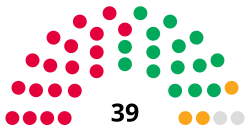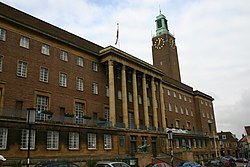
The Metropolitan Borough of Wirral is a metropolitan borough of Merseyside, in North West England. It has a population of 322,453 (2022), and encompasses 62 square miles (161 km2) of the northern part of the Wirral Peninsula. Major settlements include Birkenhead, Wallasey, Bebington, Heswall, Hoylake and West Kirby. Wirral is England's westernmost metropolitan borough, faced by the city of Liverpool to the northeast over the River Mersey.

King's Lynn and West Norfolk is a local government district with borough status in Norfolk, England. Its council is based in the town of King's Lynn. The district also includes the towns of Downham Market and Hunstanton, along with numerous villages and surrounding rural areas. The population of the district at the 2021 census was 154,325.
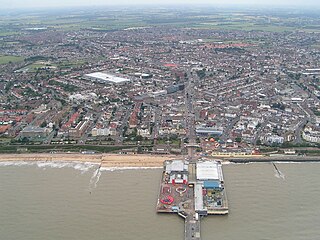
Tendring District is a local government district in north-east Essex, England. Its council is based in Clacton-on-Sea, the largest town. Other towns are Brightlingsea, Harwich, Frinton-on-Sea and Walton-on-the-Naze.

Broadland is a local government district in Norfolk, England, named after the Norfolk Broads. Its council is based at the Broadland Business Park on the outskirts of Norwich. The district includes the towns of Aylsham, Reepham, Sprowston and Thorpe St Andrew. Several of the district's settlements form part of the Norwich built-up area, lying outside the city's boundaries to the north-west and north-east. The district also includes numerous villages and surrounding rural areas. Some eastern parts of the district lie within The Broads.

The Borough of Great Yarmouth is a local government district with borough status in Norfolk, England. It is named after its main town, Great Yarmouth, and also contains the town of Gorleston-on-Sea and a number of villages and rural areas, including part of The Broads. Other notable settlements include Caister-on-Sea, Hemsby, Hopton-on-Sea and Winterton-on-Sea.
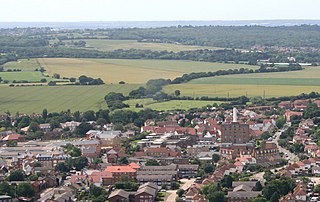
Rochford is a local government district in Essex, England. It is named after one of its main settlements, Rochford, where the council is based. The largest town in the district is Rayleigh. Other places in the district include Hockley, Ashingdon, Great Wakering, Canewdon and Hullbridge.
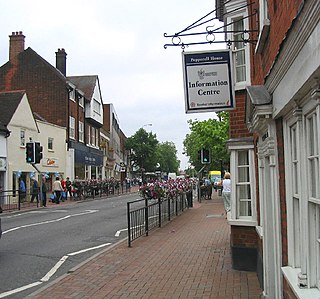
The Borough of Brentwood is a local government district with borough status in Essex, England. The borough is named after its main town of Brentwood, where the council is based; it includes several villages and the surrounding rural area.

The Council of the Royal County of Berkshire, also known as the Berkshire County Council, was the top-tier local government administrative body for Berkshire from 1889 to 1998. The local authority had responsibilities for education, social services, public transport, planning, emergency services and waste disposal, and had 87 members. Berkshire County Council shared power with six lower-tier district councils, each of which directed local matters.

Sheffield City Council is the local authority for the City of Sheffield, a metropolitan borough with city status in South Yorkshire, England. The council consists of 84 councillors, elected to represent 28 wards, each with three councillors. It is currently under no overall control, with Labour, the Liberal Democrats and the Green Party each holding chair positions in a proportionate number of committees.
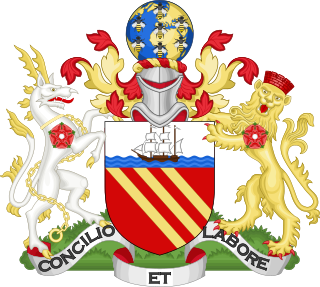
Manchester City Council is the local authority for Manchester, a city and metropolitan borough in Greater Manchester, England. Manchester is the sixth largest city in England by population. Its city council is composed of 96 councillors, three for each of the 32 electoral wards of Manchester. The council is controlled by the Labour Party and led by Bev Craig. There is currently no official opposition as the two opposition groups, the Green Party and the Liberal Democrats both have four councillors. Joanne Roney is the chief executive. Many of the council's staff are based at Manchester Town Hall.
Birmingham City Council elections are held every four years. Birmingham City Council is the local authority for the metropolitan district of Birmingham in the West Midlands, England. Since the last boundary changes in 2018, 101 councillors have been elected from 69 wards. Prior to 2018 elections were held three years out of every four, with a third of the council elected each time.

Middlesbrough Council, also known as Middlesbrough Borough Council, is the local authority for Middlesbrough, in the ceremonial county of North Yorkshire, England. Since 1996 it has been a unitary authority, providing both district-level and county-level services. The council is led by the directly elected Mayor of Middlesbrough.
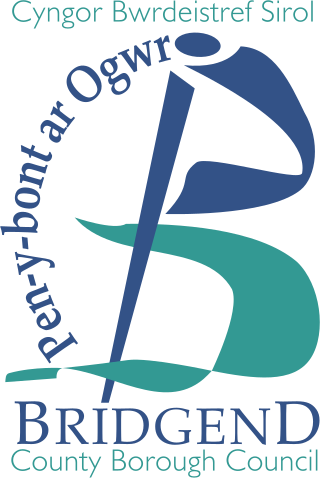
Bridgend County Borough Council is the governing body for Bridgend County Borough, one of the principal areas of Wales.

Rutland County Council is the local authority for the unitary authority of Rutland in the East Midlands of England. The current council was created in April 1997. The population of the council's area at the 2011 census was 37,369.

Halton Borough Council is the local authority for the Borough of Halton, incorporating the towns of Runcorn and Widnes and the parishes of Daresbury, Hale, Moore and Preston Brook. It is a constituent council of Liverpool City Region Combined Authority.

Cumbria County Council was the county council for the non-metropolitan county of Cumbria in the North West of England. Established in April 1974, following its first elections held the previous year, it was an elected local government body responsible for the most significant local services in the area, including schools, roads, and social services.

Ipswich Borough Council is the local authority for Ipswich, a non-metropolitan district with borough status in Suffolk, England. It is the second tier of a two-tier system, fulfilling functions such as refuse collection, housing and planning, with Suffolk County Council providing county council services such as transport, education and social services.

Southend-on-Sea City Council is the local authority of the Southend-on-Sea district in Essex, England. It is a unitary authority, having the powers of a non-metropolitan county and district council combined. It is a member of the East of England Local Government Association. It is based at Southend Civic Centre in Southend-on-Sea.

Wirral Council is the local authority of the Metropolitan Borough of Wirral in Merseyside, England. Wirral is a metropolitan borough, one of five in Merseyside, and provides the majority of local government services in Wirral. The council is a constituent member of the Liverpool City Region Combined Authority.

North Tyneside Council is the local authority for the metropolitan borough of North Tyneside in Tyne and Wear, England. It is one of five such councils in Tyne and Wear, and one of 36 in England. It provides the majority of local government services in North Tyneside.


